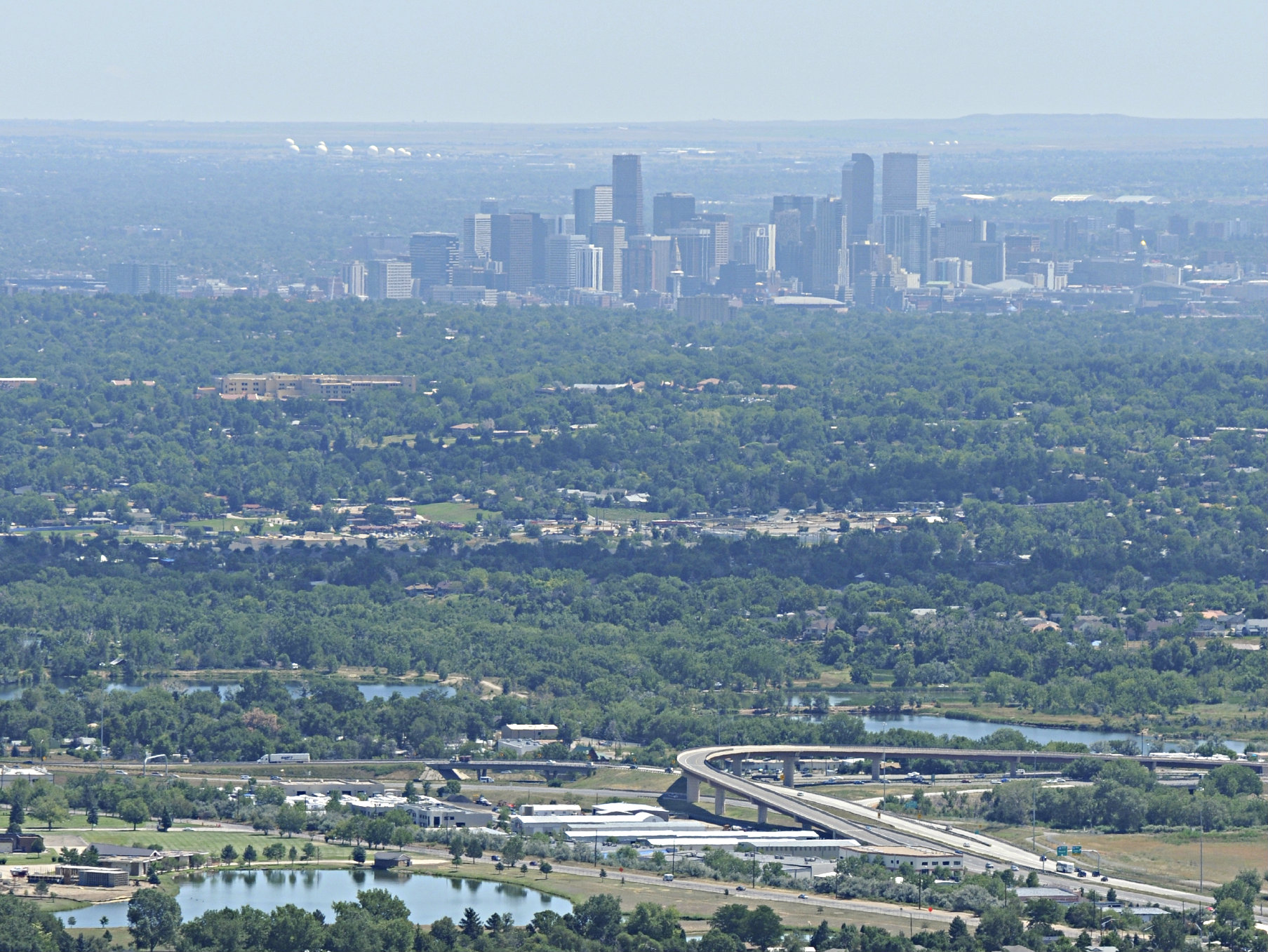
As the summer of 2015 heats up, expect to see more Ozone Action Alerts like the one issued Monday. Here is what those warnings mean and what you can do about them.
What is ozone?
On a chemical level, ozone is just oxygen. But unlike the oxygen we breathe, ozone has an extra atom attached to it making it O3, not O2.
Ozone occurs naturally and you can probably even recognize it. You know that sweet, pungent smell that often signals a summer rainstorm? That's ozone, according to Scientific American. It's carried on downdrafts in a thunderstorm from higher altitudes.
Christopher Dann, who manages communications for the Colorado Air Pollution Control Division, has a rhyme: "Ozone is good up high, but bad nearby." In the upper atmosphere it protects Earth against the ultraviolet -- and damaging -- rays of the sun, which is why we worry about holes in the ozone layer.
At ground-level, ozone is a harmful air pollutant. Ozone isn't directly emitted into the lower atmosphere, but rather occurs when oxides of nitrogen and volatile organic compounds "bake" in the sun. Motor exhaust, gas vapor, chemical solvents or industrial emissions combine to form ozone pollution, according to the EPA. Such a variety and number of pollution sources makes ozone particularly hard to regulate, says Dann.
What makes ground-level ozone harmful?
The EPA points out that ozone acts as a lung irritant, making it particularly dangerous to children, the elderly or anyone with pre-existing medical conditions like asthma or a respiratory infection. It's also harmful to folks without those conditions. People who work or exercise outdoors in areas with high ozone pollution can experience breathing difficulties and eye irritation. Prolonged exposure can reduce resistance to lung infections and colds.
How does the state assess and warn against dangerous levels of ozone?
The Regional Air Quality Council declares “Ozone Action Alerts” when it notices dangerous levels of ground-level ozone. The RAQC uses meteorological information, satellite data and hourly reports from air-quality monitors spread across the state to assess the need for an alert. The Colorado Department of Public Health and Environment notifies the public of action alerts through its website, Facebook page, Twitter handle and a range of local media outlines. Sign up for ozone alert emails here.
Those alerts -- Ozone Action Alerts -- are tied to the Federal Air Quality Index, which indicates if ozone levels have surpassed two standards: “unhealthy” or “unhealthy for sensitive groups.” Christopher Dann says ozone levels that are unhealthy for everyone are rare, but notes even healthy people should pay attention to all alerts. That’s because sensitive groups include people who work or exercise outside.
When should I expect Ozone Action Alerts?
Hot, sunny, windless days are perfect for the formation of high levels of ozone. Clouds and moderate temperatures work to prevent it.
The RAQC issues or revises alerts at 4 p.m. every day and publishes hourly data on regional air quality.
What should I do when the state declares an ozone action day?
Ozone action alerts have two purposes: warning those who could be harmed to stay indoors and encouraging individuals to help reduce the problem. The organization Ozone Aware offers a number of ways regular people can help keep ozone-causing pollutants out of the heat and sun. Those include:
- Refueling cars in the evening
- Stop at the click—don’t overfill gas tanks when refuel
- Keep gas caps tight
- Mow in the evening
- Using low-impact lawn equipment like electric lawn mowers
Am I contributing to the ozone problem?
Anyone who drives a car or mows a lawn with a gas-powered machine contributes, so the answer to that question is probably a qualified “yes.” The RAQC does have a calculator at Ozone Aware that estimates a personal ozone contribution based how you get around and whether you follow some of the general recommendations noted above.
Does Colorado have a particular problem with ozone?
A 2014 report from the American Lung Association ranked Los Angeles first in the nation by the number of days with dangers levels of ozone. The ALA ranks Fort Collins as the 22nd worst city for ozone pollution, while Grand Junction is noted as one of the cleanliest. Not that Colorado gets a pass in the report. All Front Range counties received either a D or F grade based on a weighted average of high-ozone days between 2010 and 2012.
Who sets ozone standards?
The Clean Air Act requires the EPA set two outdoor air quality standards for ozone. One standard marks an adequate level of safety for the at-risk groups discussed earlier. The other standard marks what is safe for the general public. State-level organizations then work to bring air quality below those standards.
In 2014, the EPA moved to lower those standards by up to 12 percent. Those changes are now pending review. Republicans in control of Congress and the EPA disagree markedly on exactly what those regulatory changes will cost. But if they are approved, Dann expects to see more Ozone Action Alerts in the near term.
“It's not that our air quality is getting worse from year to year,” he explains. “It's that the ceiling is being lowered”








